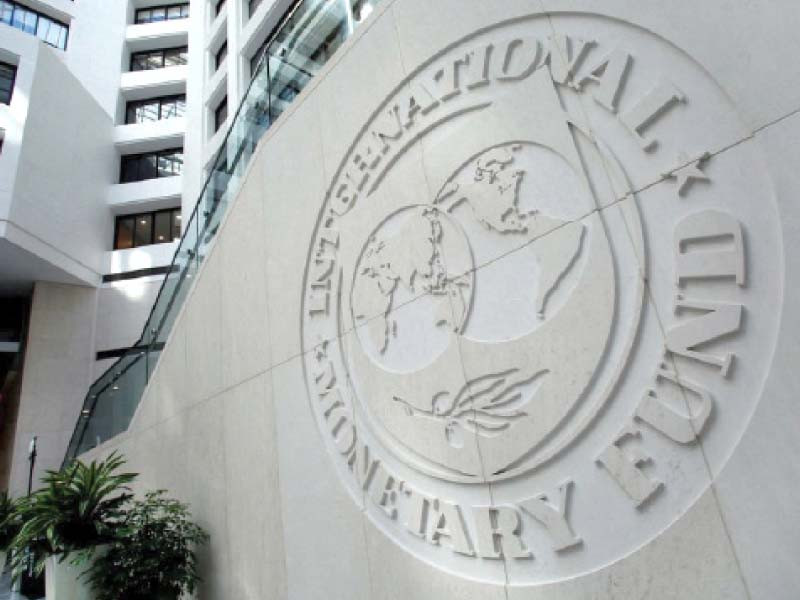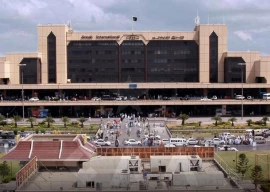
Pakistan’s tax chief hinted on Tuesday at increasing the income tax rates for the upper middle income to rich groups, as the International Monetary Fund (IMF) presented the list of its demands for additional measures that included a surge in personal income tax rates.
The IMF had raised objections to reducing the income tax rates for the salaried persons “but we are trying to protect people”, who earned Rs200,000 a month from any additional burden, Federal Board of Revenue Chairman Asim Ahmad said during an informal talk with the media.
Ahmad spoke to the media after attending a meeting of the Senate Standing Committee on Finance at the Parliament House. He said that the government was in a fix because the number of people, who earned more than Rs200,000 a month, was not very high.
“The low number of people, falling in higher income brackets does not provide a sufficient base to meet the IMF’s demand for additional revenue generation from the salaried class,” the FBR chairman told reporters.
In the budget 2022-23, the government reduced the tax burden on the salaried class and provided a relief of Rs47 billion through increasing the annual income tax exemption limit to Rs1.2 million and reducing the individual tax rates. However, the IMF demanded the increase in the tax burden to generate additional over Rs120 billion from the salaried persons.
Last year, the 1.2 million salaried individuals paid a sum of Rs150 billion in income tax on an average Rs135,000 per person. About 730,000 individuals, who submit their annual income tax returns fell in the annual income bracket of Rs1.2 million, which had now been exempted. Nearly 1 million income tax filers earn up to Rs2 million a year. This leaves a very narrow base for the government to collect additional taxes.
According to the budget, the government proposed a 12.5% income tax rate for those earning more than Rs2.4 million but up to Rs3.6 million. From Rs3.6 million to Rs6 million, the new proposed rate would be 17.5% and for the Rs6 million to Rs12 million slab the income tax rate was suggested at 22.5% and for those earning above Rs12 million the proposed rate is 32.5%.
The sources said that the government was working on a proposal to revise the tax rates for those earning Rs3.6 million and above.
Read Pakistan to default if subsidies not abolished till July: Miftah
In a statement on Monday, Ester Perez, the Resident Representative of the IMF, said that additional measures would be needed to bring Pakistan’s budget for fiscal year 2022-23 in line with the key objectives of the $6 billion programme.
On the request of the Finance Ministry, the sources said, the IMF had handed over a list of additional measures that Pakistan needed to take to convince the IMF on the viability of the proposed budget and revival of the programme.
A senior government functionary said that the IMF’s main concerns were about the personal income tax rates, the continuation of fuel and electricity subsidies and the reliability of the budget numbers.
The IMF has asked Pakistan to show a primary budget surplus, which the government has reflected at Rs152 billion for the next fiscal year, but the global lender doubts the credibility of these numbers. Also, the provincial budgets presented, so far, make this Rs152 billion overall primary surplus number unrealistic.
Abdul Rehman Warraich, former director general debt at the Ministry of Finance, said on Tuesday that four variables were necessary for the sustainability of debt: real GDP growth rate, real cost of borrowing, real exchange rate, and the primary balance.
Speaking at a webinar, arranged by the KASB Securities, Warriach stressed that the right mix of these variables was necessary for sustainable debt levels. He said that the cost of borrowing should be lower than the real GDP growth rate and that the currency should not experience large fluctuations. “Due to high debt levels, the country should run a primary surplus to ensure debt falls to sustainable levels,” he added.
Pakistan’s cost of borrowing has ranged from 4% to 5% of GDP and is set to cross 5% in 2022-23 after a sharp rise in the interest rates. Warriach highlighted that this increase was concerning, given that the acceptable fiscal deficit for any economy stood at 3% of GDP.
Pakistan’s borrowing costs are comparatively high –hovering around 16% at present – the interest expense to revenue ratio has already crossed the 80% mark.
As Pakistan’s interest servicing already exceeds 5% of GDP, Warraich suggested that all signals pointed towards a stricter fiscal discipline by the federal government. He suggested that a few years of primary surpluses, in tandem with high economic growth rates, would considerably improve Pakistan’s financial health.



1732003896-0/Zendaya-(1)1732003896-0-165x106.webp)
1731914690-0/trump-(26)1731914690-0-165x106.webp)
1732003946-0/BeFunky-collage-(70)1732003946-0-165x106.webp)
1732000275-0/Untitled-design-(9)1732000275-0-270x192.webp)


1732002687-0/Untitled-design-(11)1732002687-0-270x192.webp)

1732000005-0/Express-Tribune-(2)1732000005-0-270x192.webp)





1731749026-0/Copy-of-Untitled-(3)1731749026-0-270x192.webp)






COMMENTS (12)
Comments are moderated and generally will be posted if they are on-topic and not abusive.
For more information, please see our Comments FAQ